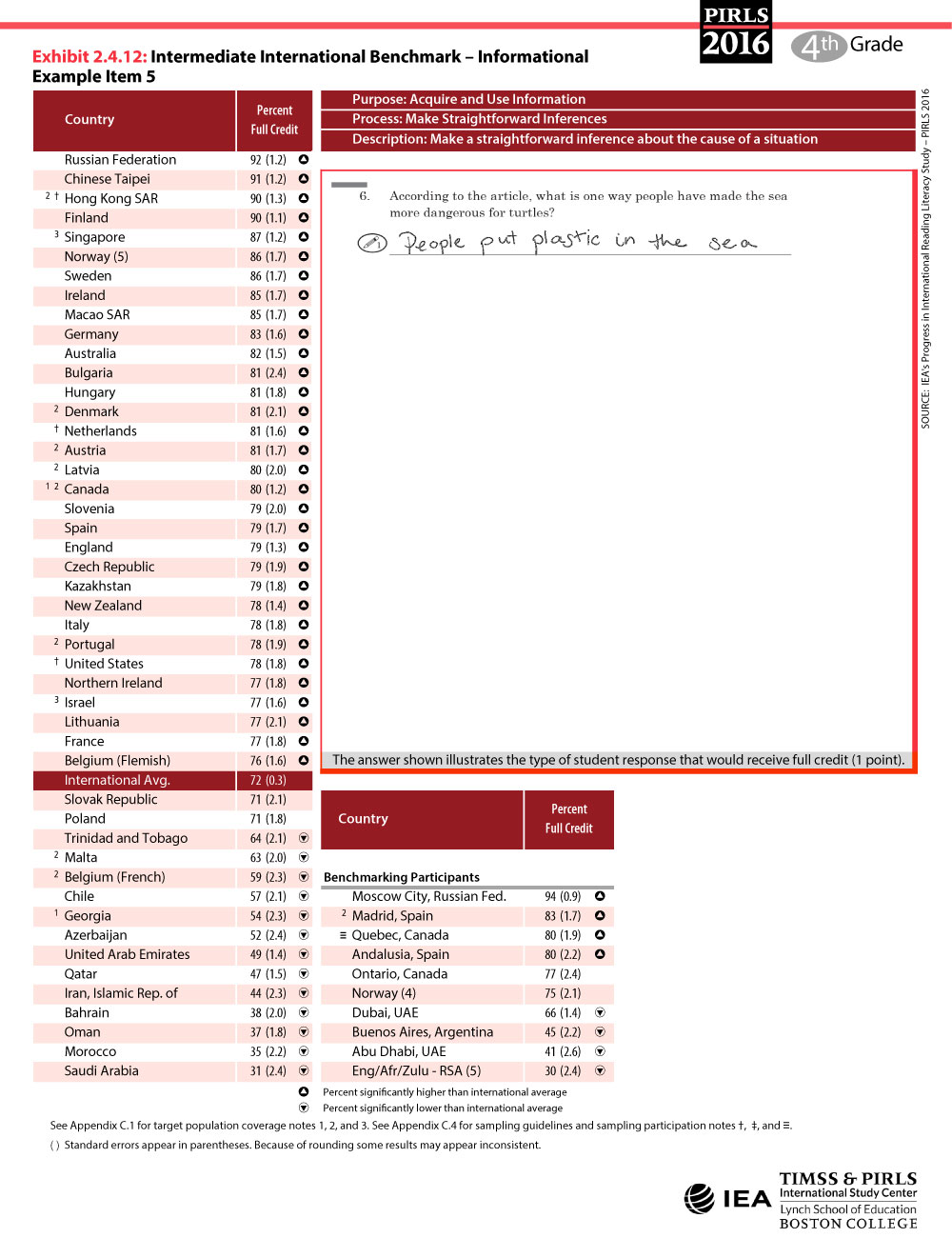PIRLS 2016 Intermediate International Benchmark (475) of Reading Achievement
Exhibits 2.4.1 through 2.4.12 present seven example items based on literary texts (“The Pearl,” “Flowers on the Roof,” and “Macy”) and five example items based on informational texts (“Rhinos” and “The Green Sea Turtle’s Journey”). All five texts and their accompanying items and scoring guides are presented in Appendix H. Each exhibit shows achievement results either for the countries that participated in PIRLS Literacy (items from “The Pearl” or “Rhinos”), all the countries participating in PIRLS Literacy and PIRLS (items from “Flowers on the Roof”), or the countries that participated in PIRLS (for “Macy” and “The Green Sea Turtle’s Journey”). Up and down arrows indicate a significantly higher or lower percentage of success for the country compared to the international average on the item. The reading purpose, comprehension process, and scale anchoring description are provided above the item. For multiple-choice items, the correct response is indicated. Constructed response questions were worth 1, 2, or 3 points. Each constructed response item is shown with an illustrative student response and the amount of credit awarded the response is shown across the bottom of the exhibit, usually full credit.
Example Items 2.4.1 and 2.4.2 show that fourth grade students at the Intermediate International Benchmark could provide two details in a constructed response format when asked about each of two different story events in “The Pearl.” Example Item 2.4.3 shows they could provide one example out of two from the longer “Flowers on the Roof.” They also could interpret and integrate information across “Flowers on the Roof” to identify the narrator of the story (Example 2.4.4). Based on the “Macy” story, they recognized the reason for a character’s action (Example Item 2.4.5), integrated evidence about a character’s action (Example Item 2.4.6), and recognized how the author demonstrated a character’s traits (Example 2.4.7).
In reading the “Rhinos” PIRLS Literacy text, students reproduced an explicitly stated action from toward the end of the text (Example Item 2.4.8), made an inference about an explanation (Example 2.4.9), and interpreted information to provide a full explanation of why ticks cause a problem for rhinos (Example 2.4.10). In reading the PIRLS text about sea turtles, students made inferences to answer a multiple-choice item about the content of the first section of the text (Example 2.4.11) and to answer a constructed response question about how people are making the sea more dangerous for turtles (Example Item 2.4.12).
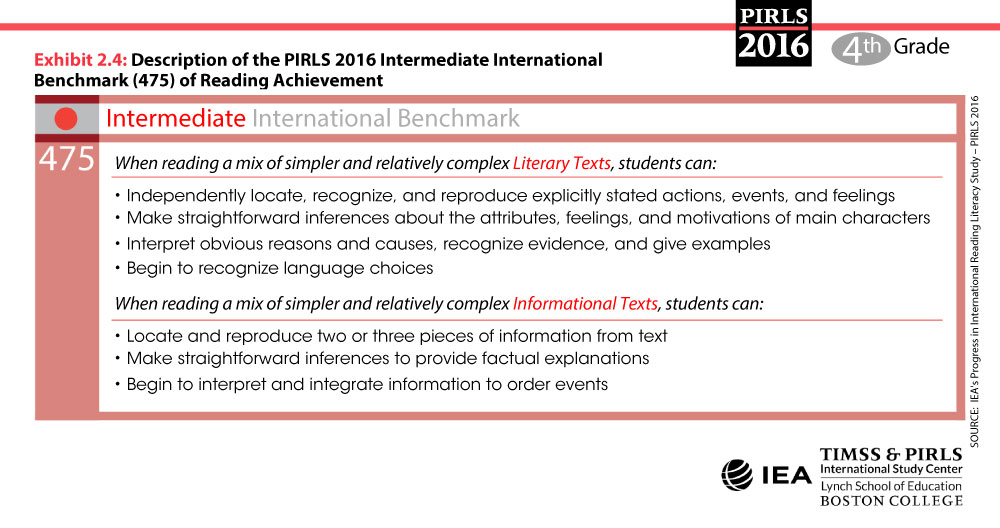
Item 1
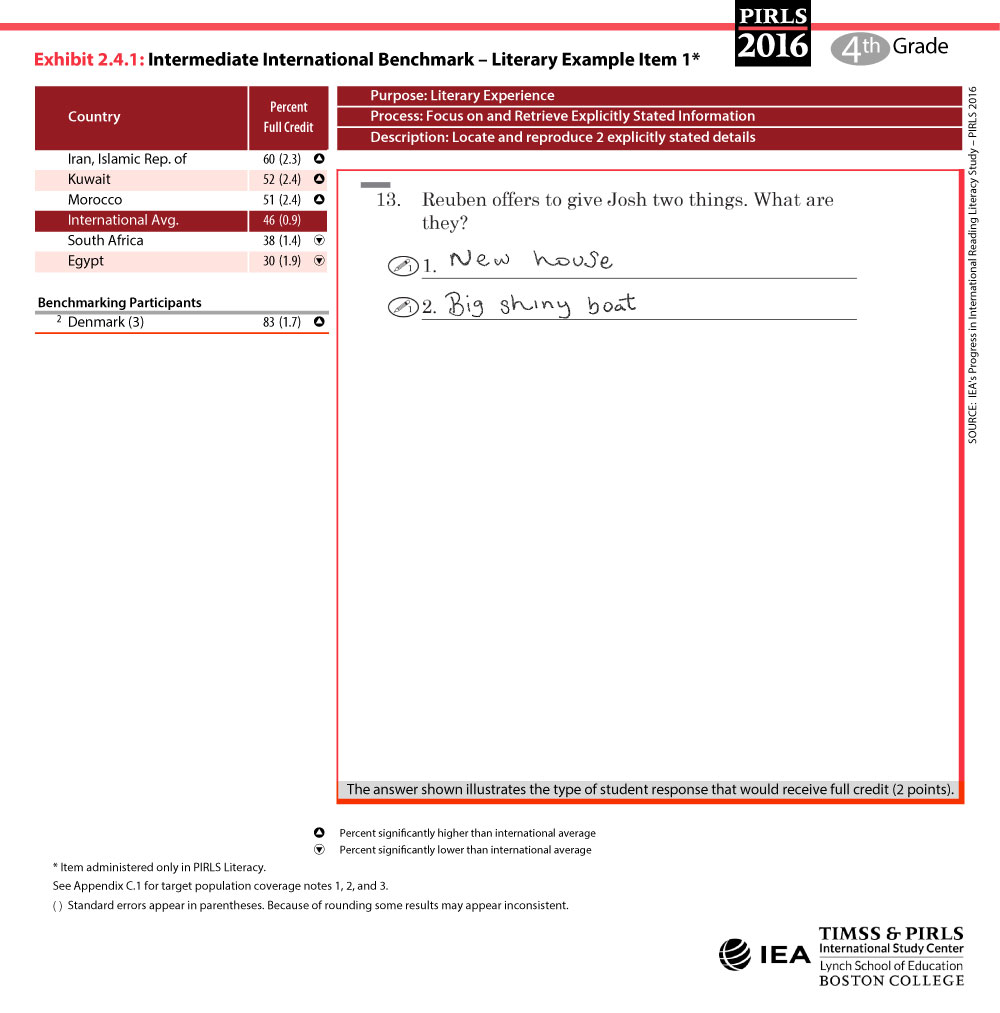
Item 2
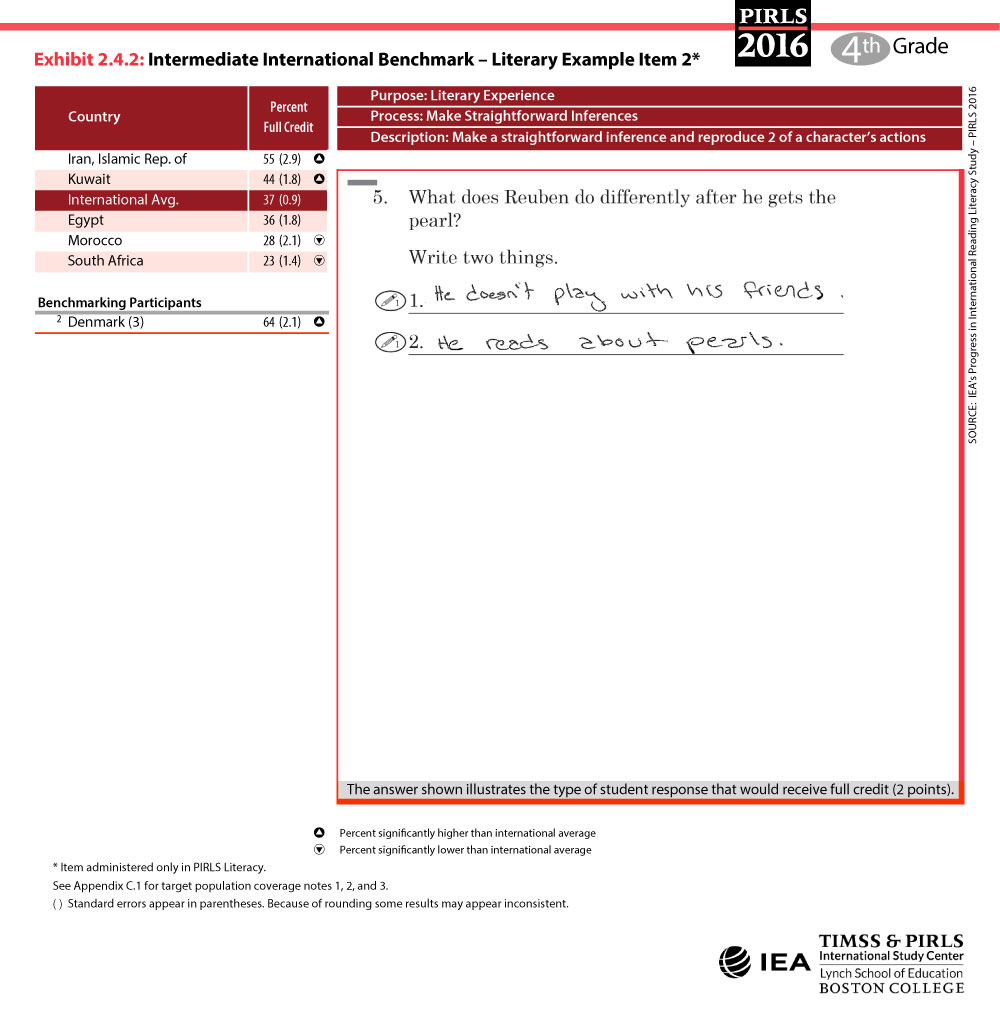
Item 3

Item 4
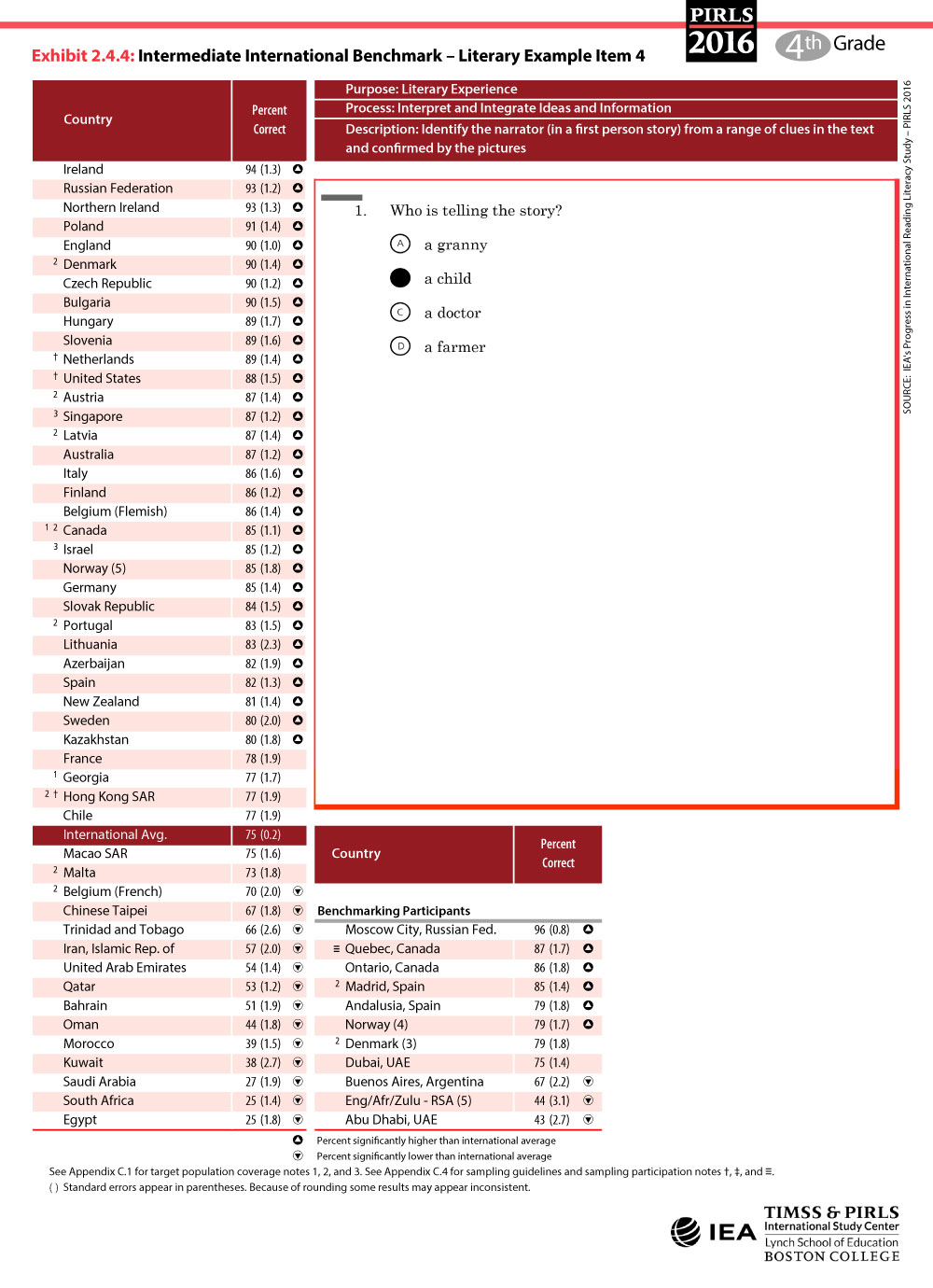
Item 5
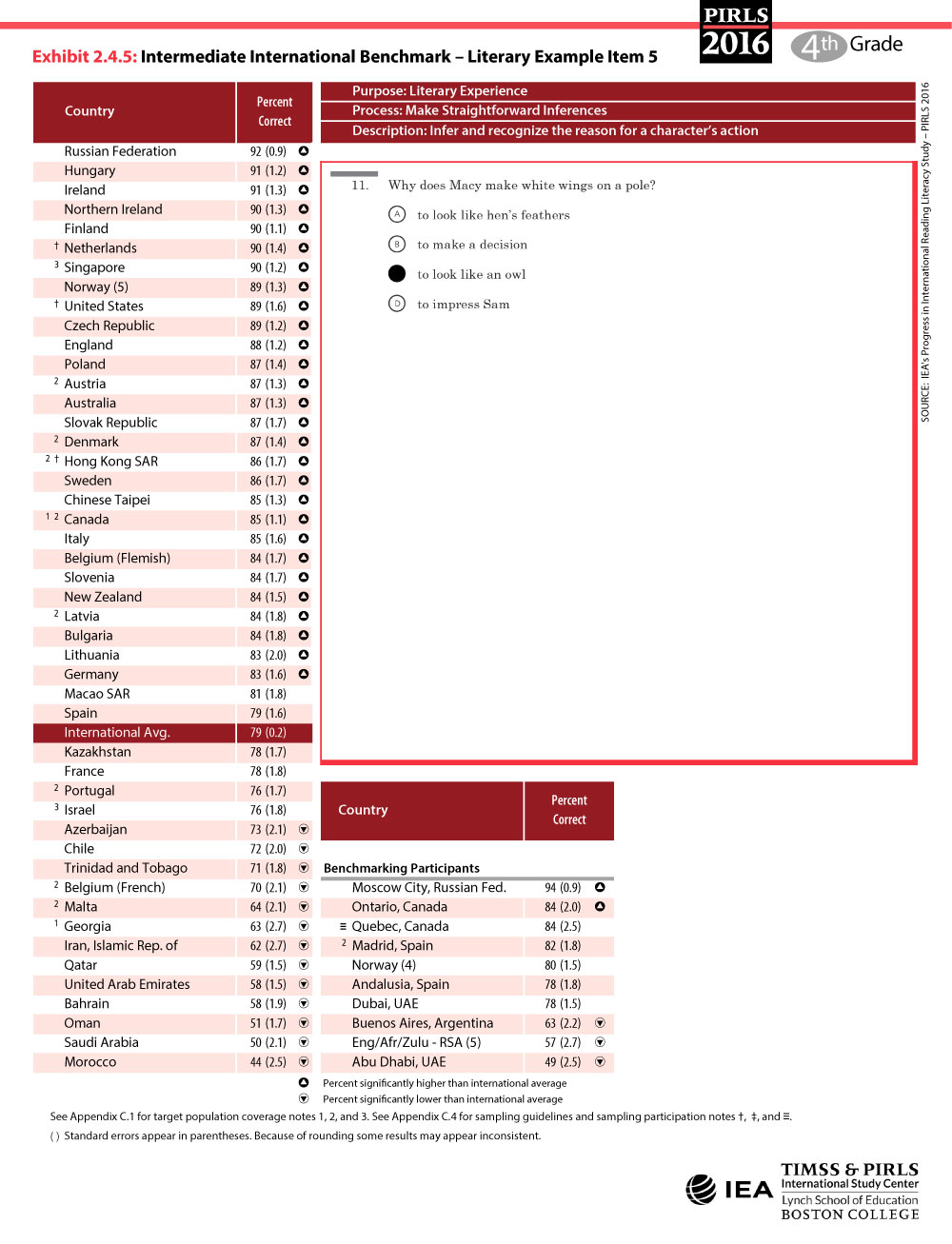
Item 6
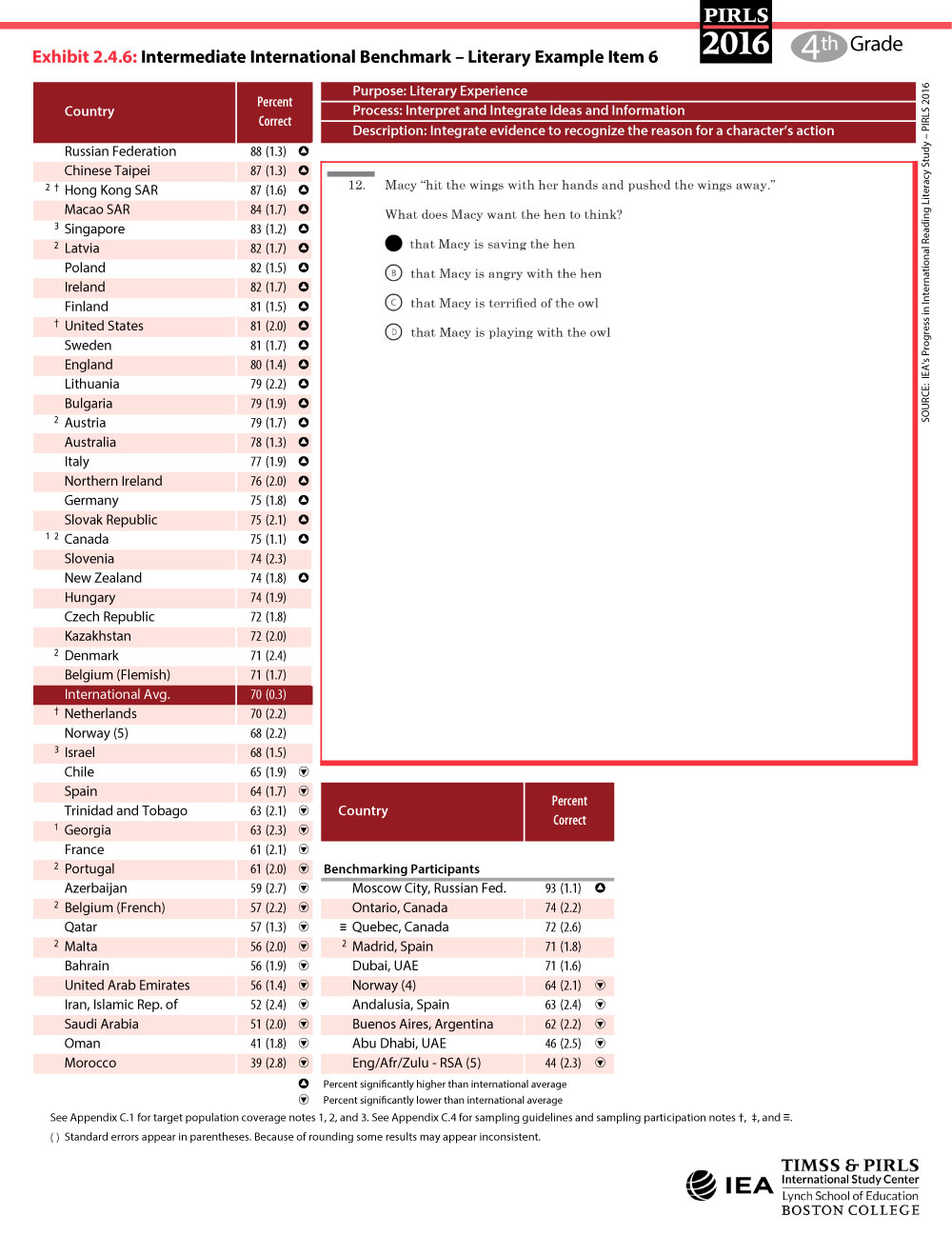
Item 7

Item 1
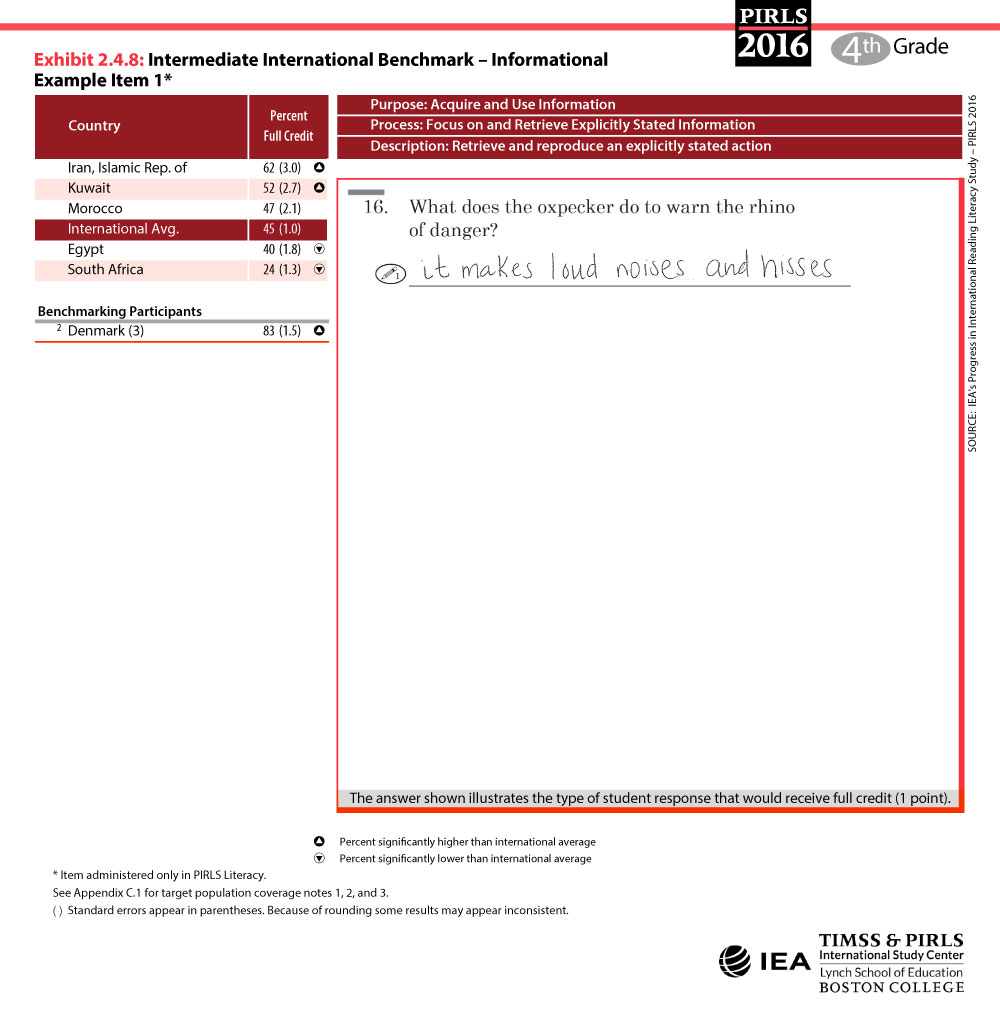
Item 2
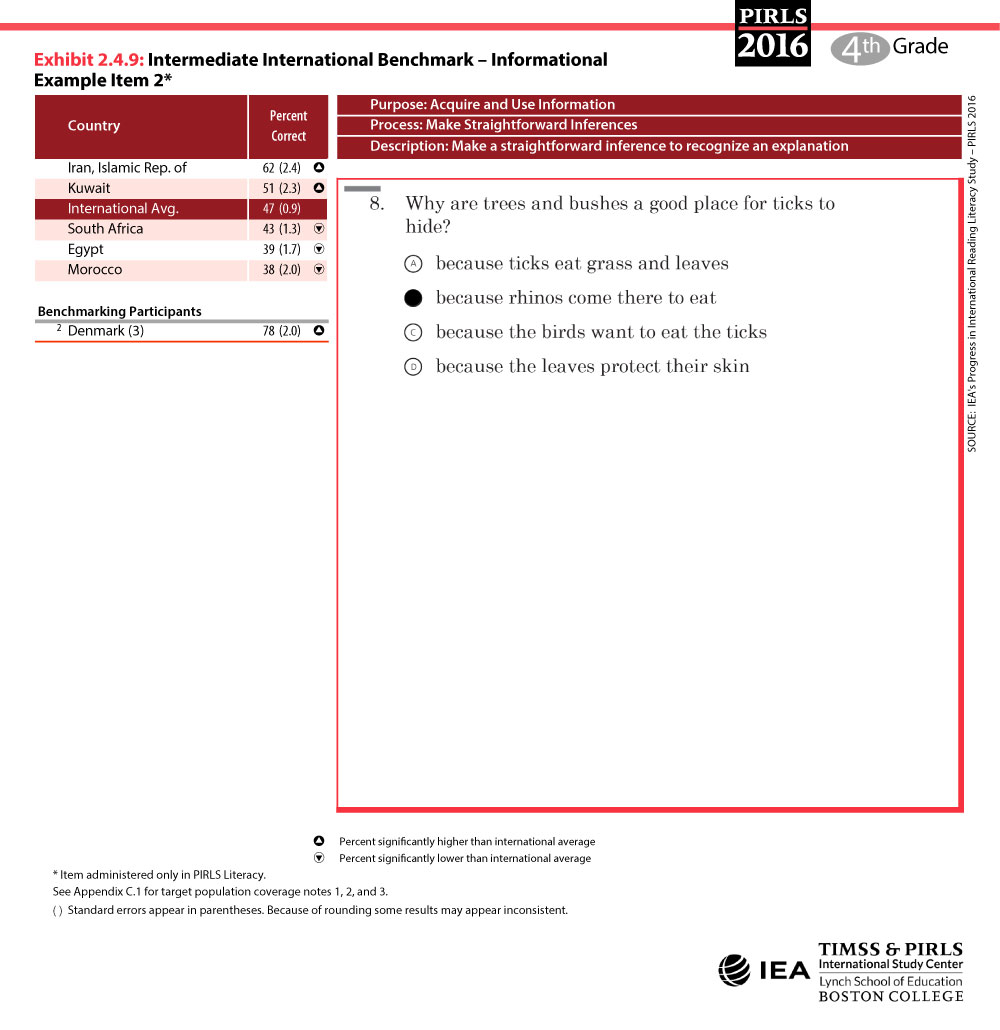
Item 3
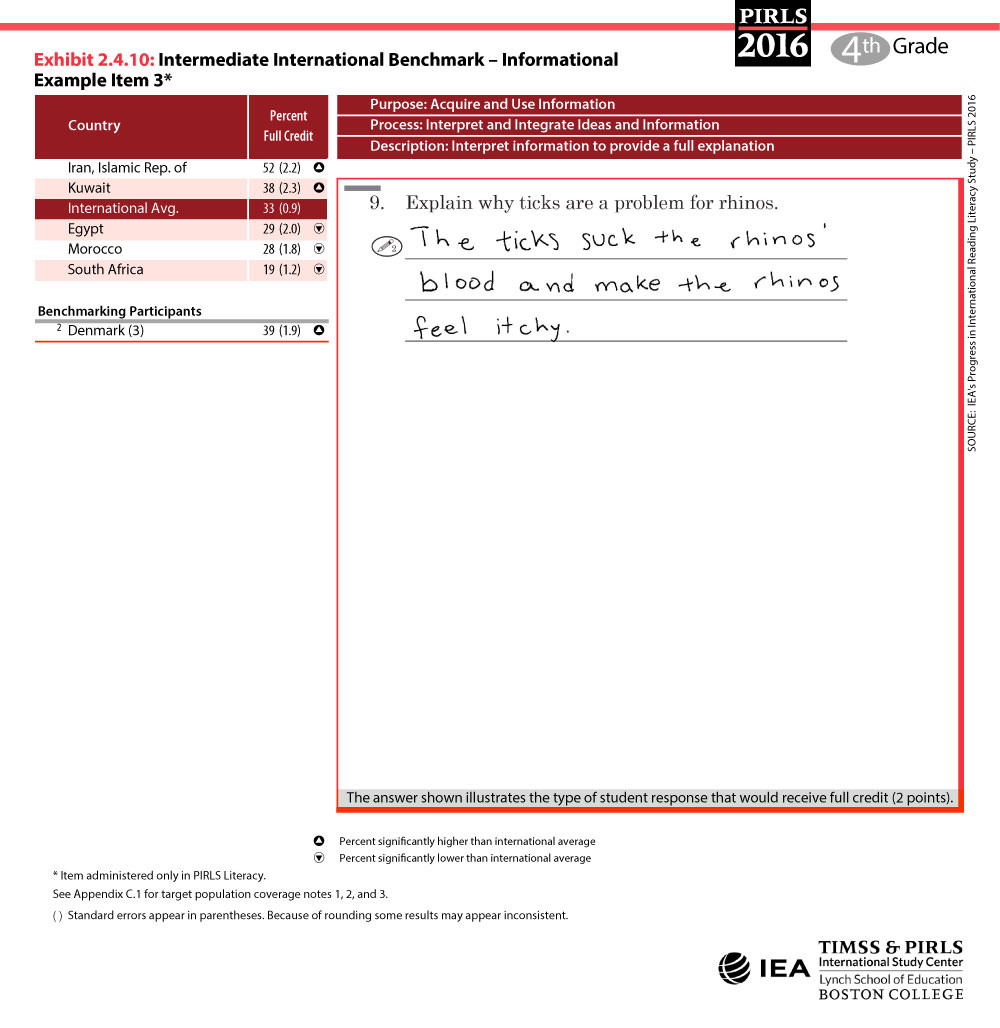
Item 4
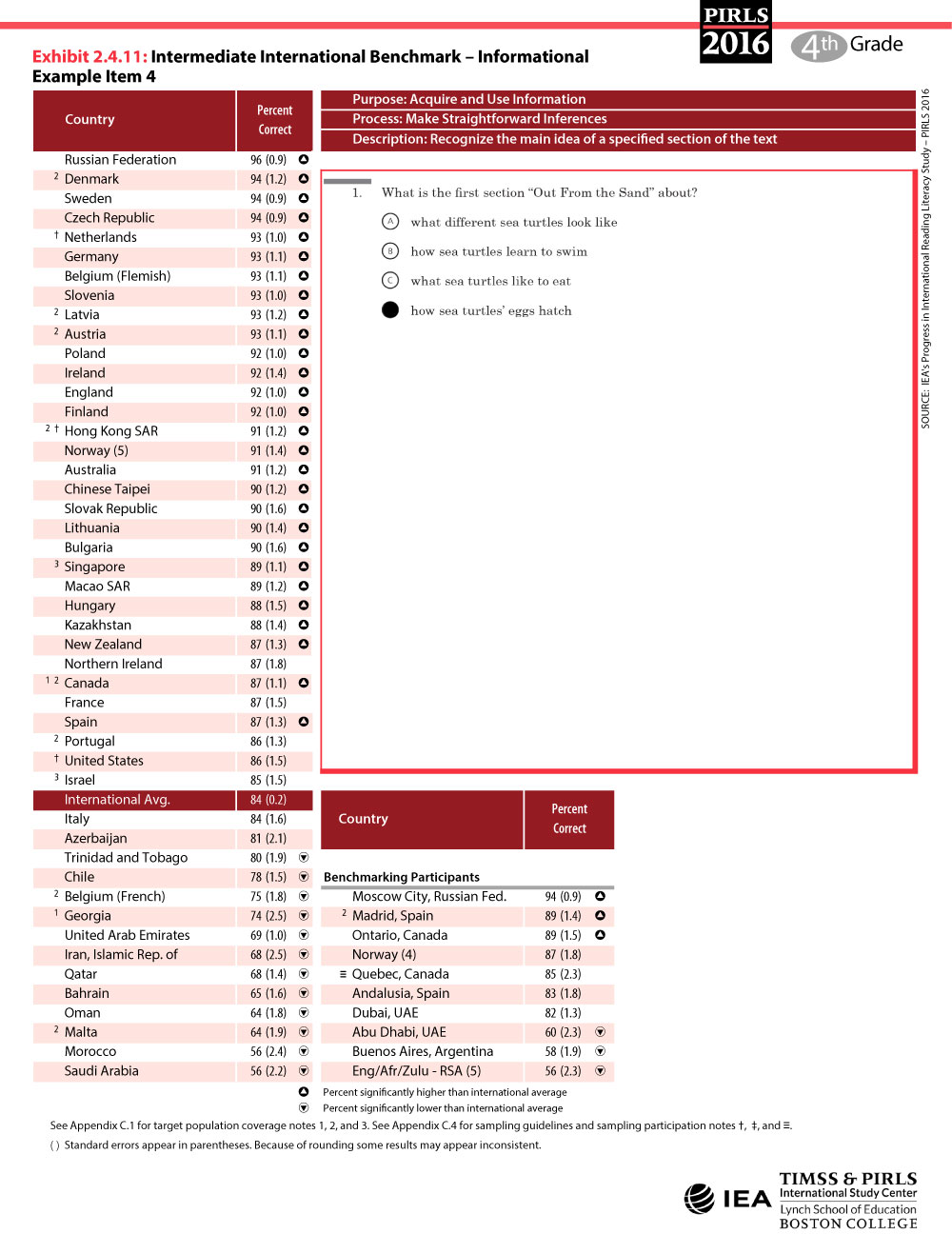
Item 5
